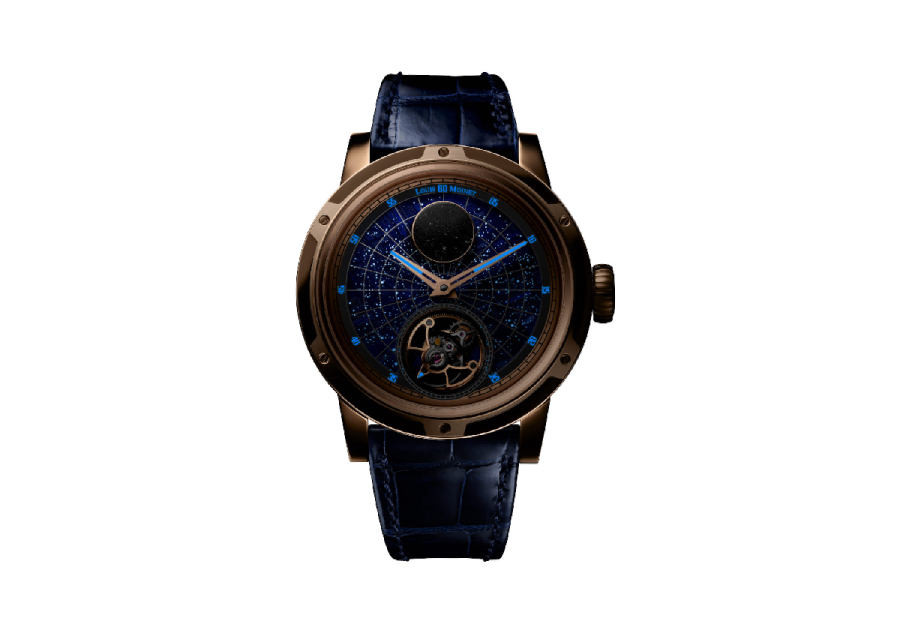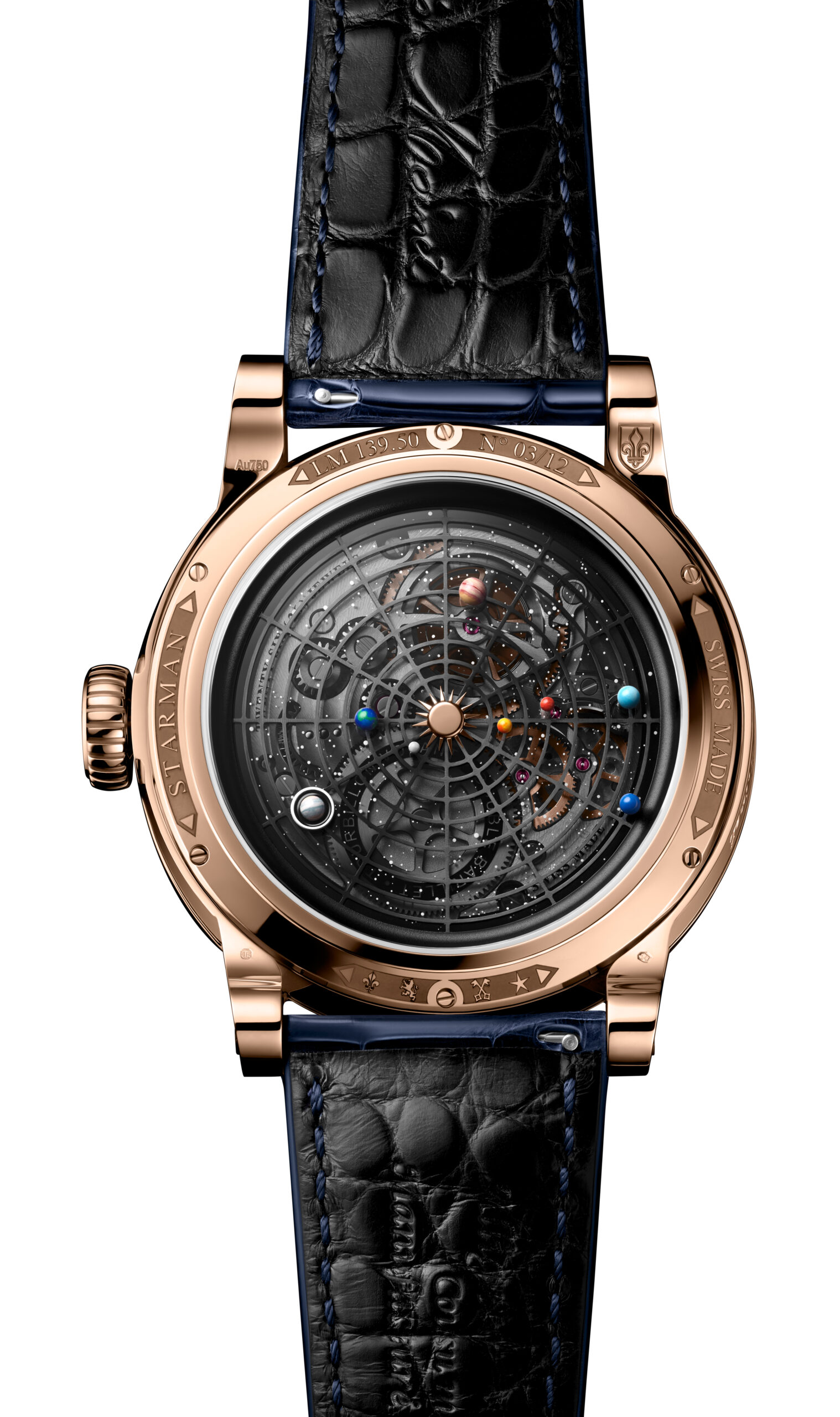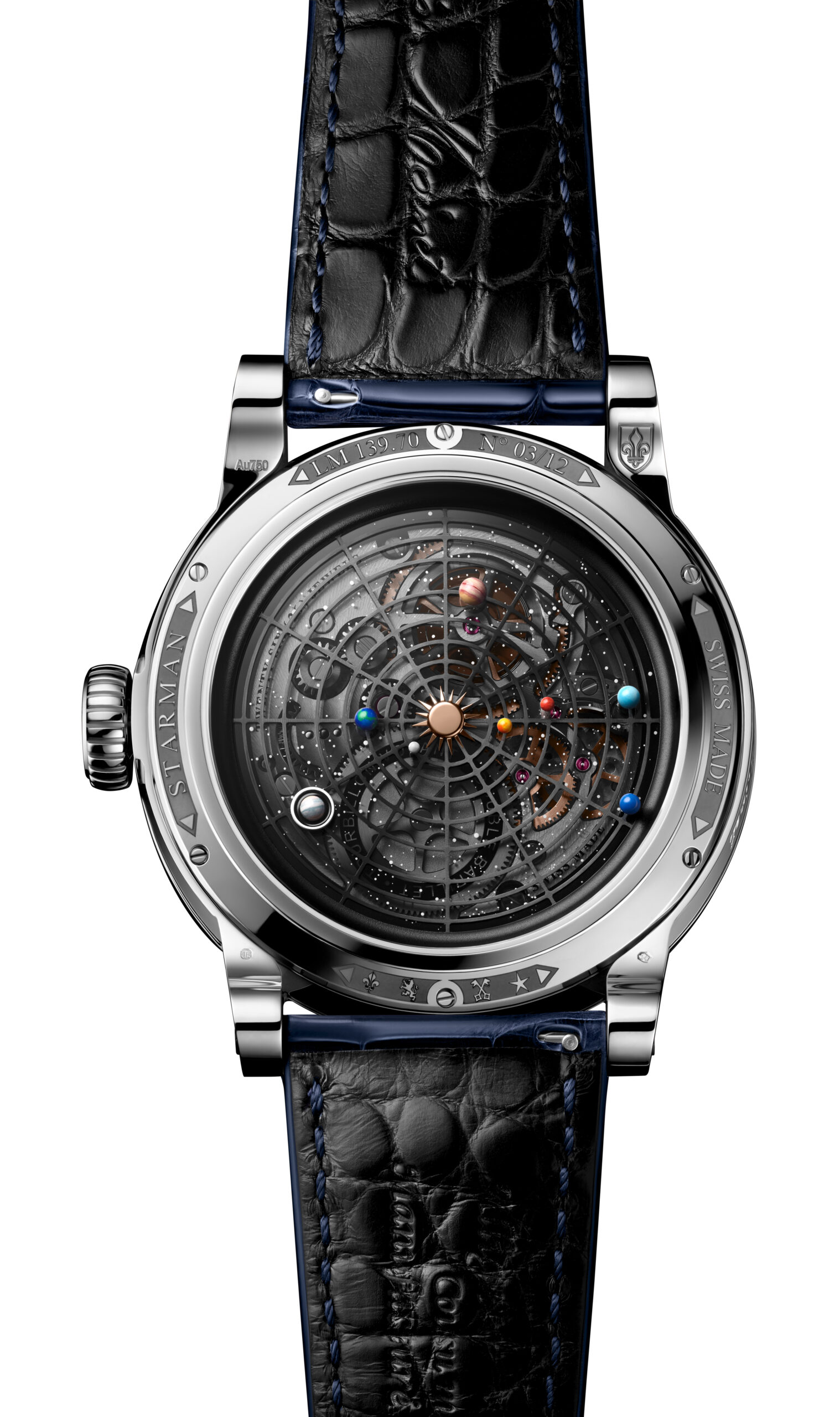Imagine a watch that holds the first traces of life ever discovered in the cosmos.
STARMAN is a timepiece that might have been named by the stars themselves. It was born of a fascination for the wonders of the cosmos. This horological artpiece combines exceptionally rare meteorites, high technology, and artistic prowess. Each detail reveals a secret, celebrating space through the timeless elegance of haute horlogerie, and it does so day and night.
“Among the treasures of my personal collection are meteorites that have fascinating stories. One in particular, the Jbilet Winselwan, is noted for the presence of amino acids, molecules that are considered the building blocks of life itself. I was fascinated by these traces of life in space, so this year I decided to incorporate a fragment of that meteorite in a timepiece with a name that came quite naturally: STARMAN. This creation is the product of remarkable horological techniques, has many other secrets to reveal…”
-Jean-Marie Schaller
Owner and Creative Director
A fragment of the Jbilet Winselwan meteorite majestically dominates the upper part of the STARMAN’s dial and competes visually with the tourbillon. This beautiful black stone, spangled with little brown dots, was discovered in the western Sahara Desert. It bears amino acids and is thus a silent witness to the first sparks of life spread throughout the cosmos.
The STARMAN Dial
a higly complex construction
The STARMAN’s dial is a genuine feat of artistic and technical prowess. Crafted from a Gibeon meteorite base, known for its Widmanstätten pattern, it is dyed deep blue using a secret process. A second disc made of sapphire crystal features a hand-painted, luminescent constellation map.
At night, the STARMAN reveals a magnificent stellar panorama, creating an appearance of depth that draws us into the immensity of the universe itself.
The solar map and its enigma
Turn the STARMAN around, you will find a fascinating chart of the solar system. The planets, some of which only measure two millimetres in diameter, have been meticulously painted by hand and placed on a grid that seems to float over a star-lit sky. They have been placed with great precision to represent their constellation on March 21, 2013, the date Louis Moinet was finally recognised as the inventor of the chronograph during a mediagenic event at Neuchâtel Observatory.
Honouring a unique moment
Upon request, the craftspeople at Louis Moinet can also personalise the watch by positioning the planets to tell a specific date. This is a unique way to immortalise a very special moment on the backdrop of a starry sky, a date that will only be known to the owner of the watch.








